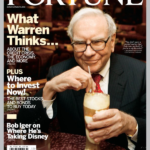The Treasuries market witnessed an additional surge on Wednesday, propelled by a deceleration in private-sector job creation. This trend has further fueled speculation among traders about potential US interest-rate cuts, particularly in anticipation of comprehensive labor-market data scheduled for release on Friday. Certain yields dipped to their lowest levels in three months, while heightened activity in the options market indicated an increase in wagers that stand to benefit most if the Federal Reserve’s policy rate drops to 2% by September.
Michael Franzese, Partner in Fixed-Income Trading at MCAP LLC, noted, “The more the numbers get weaker, the more the market wants to give the Fed the room to move quickly.”

Traders are closely scrutinizing a trio of job-market indicators this week to discern whether the Fed will find it necessary to implement rate cuts. The pivotal moment comes with the release of the Labor Department’s November employment report on Friday. While the ADP Research Institute’s data released on Wednesday does not guarantee a weakening labor market, Tuesday’s Job Openings and Labor Turnover Survey (JOLTS) fell short of all estimates in a Bloomberg survey of economists.
The 10-year yield experienced a 6-basis-point decline to 4.1%, and the 30-year yield dropped by 8 basis points to 4.21%. Both levels reached their lowest points since September 1. The fall in yields was facilitated by a decrease in oil prices, with the benchmark US crude oil contract dropping 4.1%, closing below $70 a barrel for the first time since July.
Yields also retreated in other major bond markets. Australian 10-year yields slipped 6 basis points to 4.22%, while similar-dated UK yields fell below 4% on Wednesday for the first time since May. Euro-zone bond markets are experiencing gains as expectations of central-bank easing continue to influence market dynamics.
The ADP Research Institute reported that private sector payrolls expanded less than economists had estimated in November. Additionally, the Labor Department revealed on Wednesday that unit labor costs fell at a 1.2% rate in the third quarter, surpassing previous estimates.
As the Federal Reserve policy makers convene for the last time in 2024, market participants eagerly await any signals in their quarterly forecasts that could potentially modify current market expectations. The prevailing sentiment has been leaning towards anticipations of increased easing in the coming year, prompted by economic data falling short of earlier forecasts.









